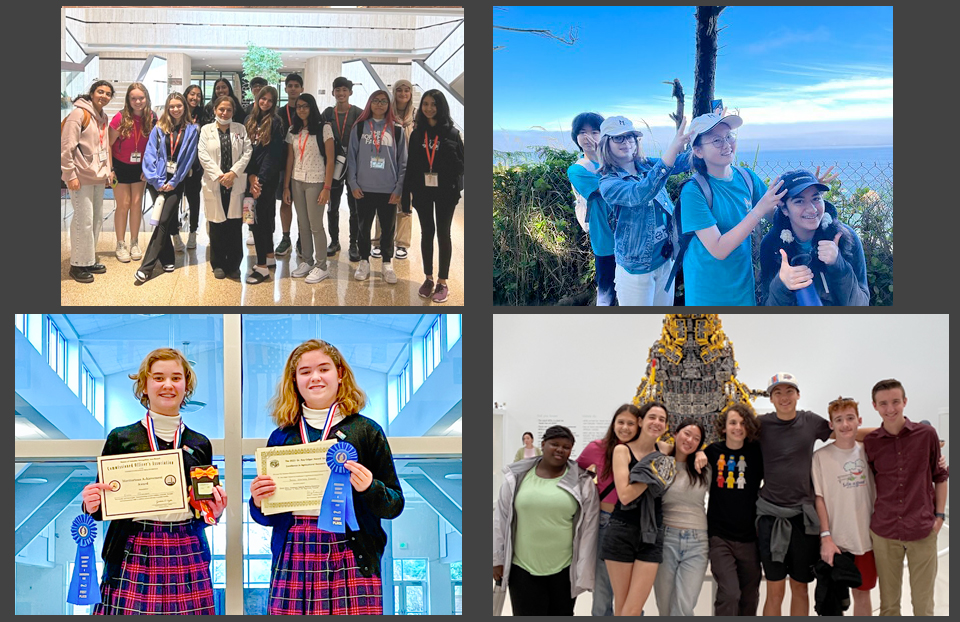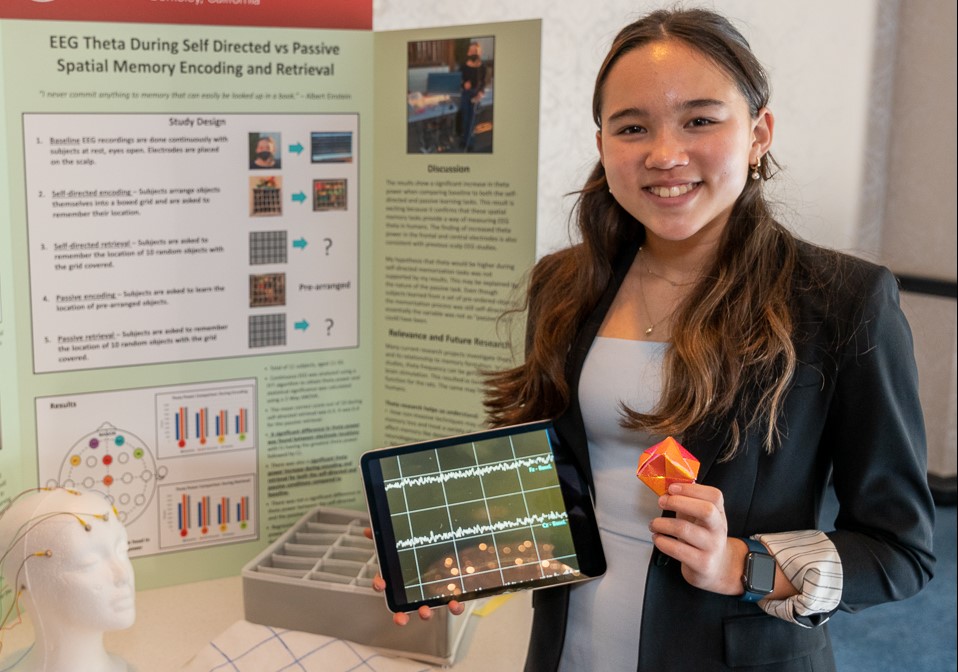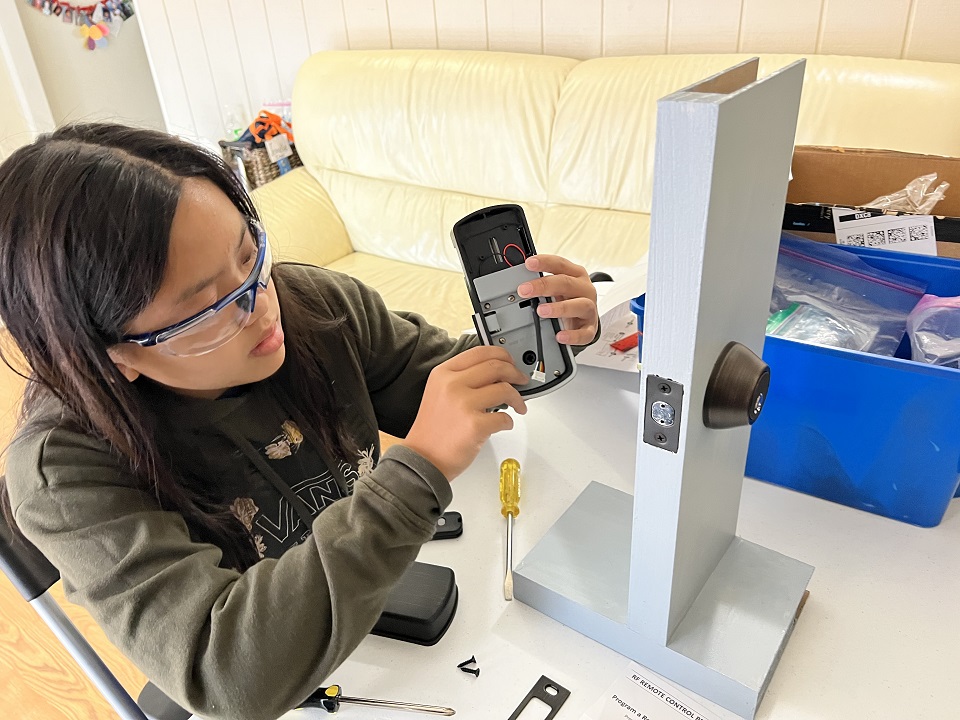Breaking the jaw clenching habit
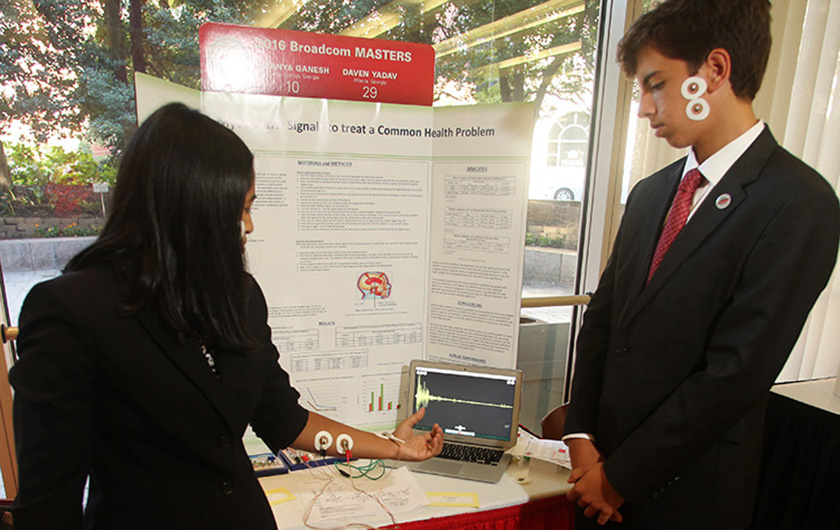
When she started clenching her jaw so much that it became painful, Ananya Ganesh decided to design a device to keep her from clenching due to bruxism. She built a device that detects signals coming from a muscle when it contracts.
Ananya hopes her device can break the habit of jaw clenching and keep the pain away.
The Society caught up with Ananya after she won the first place science award for her project at the 2016 Broadcom MASTERS in October. Read on to learn what she plans to do with her bruxism research next.
HOW HER DEVICE WORKS: I have bruxism, an overuse of a jaw muscle that can cause jaw pain, migraines, and sore teeth. I wanted to create a device to keep people from clenching their jaws to lessen the pain.
My device offers biofeedback, like a light being turned on, to alert someone that they’re clenching their jaw, and remind them to stop. As soon as you clench, a light comes on and it alerts someone to stop clenching to help lessen the pain.
My partner and I thought that as the jaw muscle tires from overexertion, the electric signal it generates would decrease. We designed a circuit board to record electric signals detected by sensors.
Support future young scientists. Join the Society today!
After recruiting six volunteers at school, we attached electrodes to the skin near a forearm muscle. Each person flexed that arm hard for a standard time period. Then we attached the electrodes to the volunteers’ faces near the jaw muscle. We told the subjects to clench their jaws, and light displays and sounds signaled when they should relax their jaws.
As we expected, the amplitude of the electric signals from the muscle contractions decreased over time. That showed that fatigue had set in.
Be curious enough to look for answers.
Much more work is necessary to make a practical biofeedback device, including more testing and extensive design details. But we saw a correlation between measurable electric signals from the jaw muscle and muscle fatigue. This device could help jaw clenchers break the habit and cure the pain.
HER STEM GOALS FOR THE FUTURE: I am currently working on improving the biofeedback device for bruxism, making it smaller and more user-friendly.
STEM is so vast and interesting discoveries are being made every day. I feel that the best way to equip myself for a career in STEM is to advance my knowledge constantly.
The best way to equip myself for a career in STEM is to advance my knowledge constantly.
One area that I would like to learn and experiment in is molecular biology and genetics. I haven’t really had an opportunity to be exposed much to that, so I’m going to use my award to participate in a summer program in biological or biomedical research.
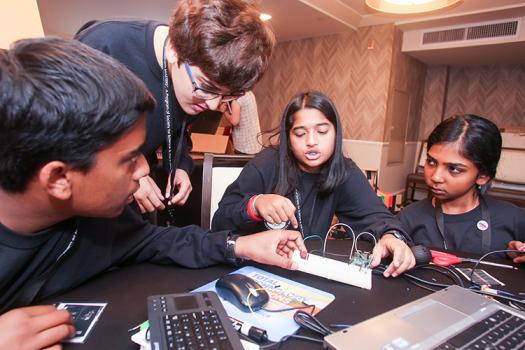
WHEN HER NAME WAS CALLED FOR THE FIRST PLACE SCIENCE AWARD: I was too stunned to react when my name was called! Every finalist I met on my team and other teams were incredibly brilliant and knowledgeable. It was a moment of pride and humility at the same time.
Don’t be intimidated to try.
I was encouraged by the public interest in my project. A lot of people came up to me to say that they were habitual clenchers and would like to try this product! So I am certainly inspired to continue to work, learn more about bruxism, and find more ways to help people break the habit. I am particularly interested in studying the triggers that make people clench.
HOW SHE BECAME INTERESTED IN SCIENCE: I went to a Montessori school until first grade where we learned science in a very hands-on way. We grew plants in class to study leaf structure. I remember we had tadpoles and caterpillars in the classroom and observed them every day for changes until they became frogs and butterflies. We had cooking sessions to learn chemistry.
I was encouraged by the public interest in my project.
I didn’t know it was called “science” then, but I was absolutely in awe of it. I think that because it was taught in a fun and inquiry-based method, the love of science stayed with me. I still learn best by doing.
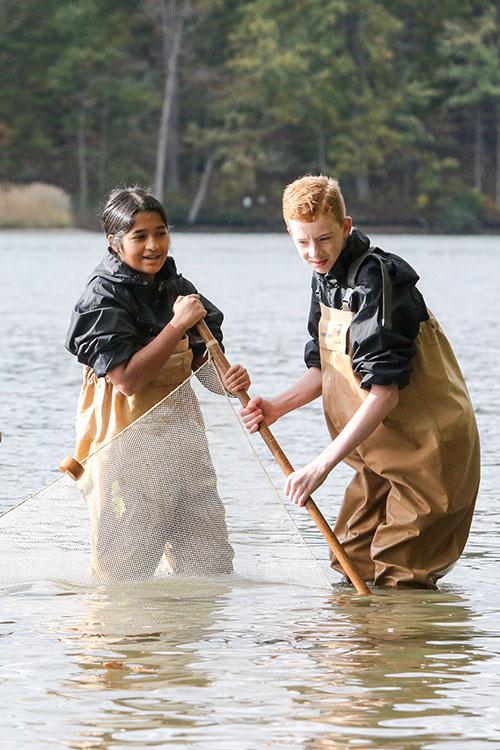
HER FAVORITE PART OF BROADCOM MASTERS: My favorite part was the team challenges. It was interesting to see how we would all use our individual strengths to contribute to the team in order to find the best solution, considering we all barely knew each other! There was an instant trust and connection. It’s very rare for that to happen.
There was an instant trust and connection. It’s very rare for that to happen.
ADVICE FOR OTHER YOUNG PEOPLE INTERESTED IN STEM: The beauty of science is there is no wrong answer! Every experiment we do, even if we think it’s failed, takes us closer to the truth. Rule number one is don’t be intimidated to try. Do not be afraid to question.
The beauty of science is there is no wrong answer!
Another rule is to start small, but start nevertheless. If a topic interests you, start by reading about it, then try a small project about that topic. Then keep working deeper and wider. Soon you will know enough about that topic to seek out a mentor and take it to the next level. That is how phenomenal projects are accomplished. But they all start with a simple question. No topic is too trivial. You just need to be curious enough to look for answers.
And don’t feel like you have to make a groundbreaking discovery or invent something extraordinary to participate in a science fair. It is not about what topic you pick or what project you do, but how you make it your own and what you learned from it.
